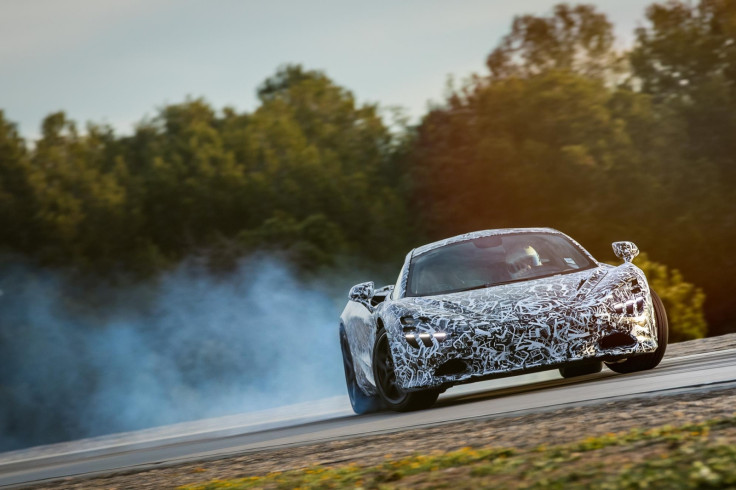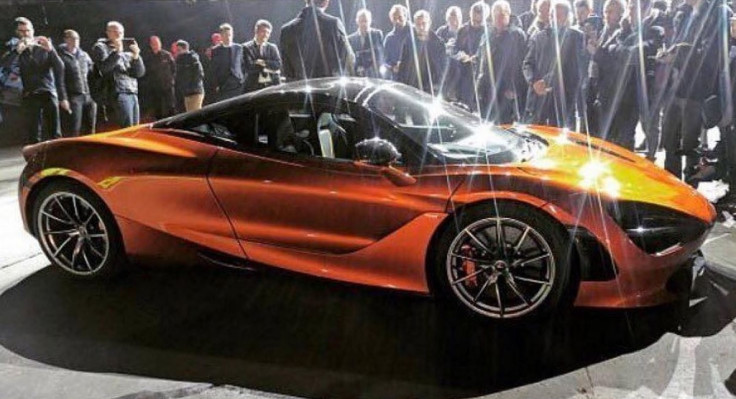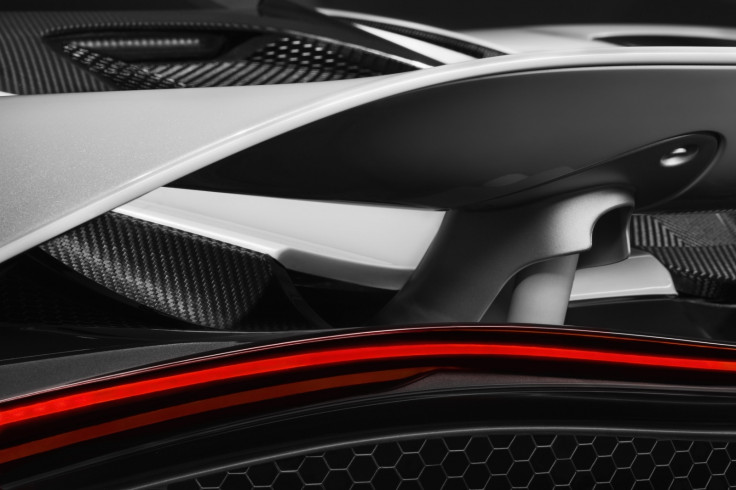McLaren 720S images, leaks, specs, price and release date: Everything we know so far
The complete IBTimes UK guide to the McLaren 720S supercar, due to launch on 7 March.

Six years on from the MP4-12C kick-starting McLaren's return to road car manufacturing, the company is about to launch its first true successor.
Although the car evolved into the 650S and later the 675LT, the new addition will mark the beginning of the second generation of McLaren's 'Super Series' of mid-engined, two-seat supercars aimed squarely at beating Ferrari.
Known internally as the P14 and expected to be called the 720S, the new car will be revealed at the Geneva motor show on 7 March. Until then, we have a steady supply of teasers from McLaren – and one incredible leak – to tide us over. Here is everything we know so far.
This article will be updated as we hear and see more about McLaren's next supercar.
What will the new McLaren be called?
As we said above, the car is known internally as the P14 but will probably be called the 720S. McLaren has a tradition of referring to unannounced cars as P-something. The MP4-12C was known within the walls of the Woking headquarters as P11, the P1 hypercar (P for a different reason) was called the P12, and the P13 became the 570S and the company's first 'Sports Series' car.
As for the 720S bit, this is the power, in PS, of the engine. PS, if you are wondering, is short for the German word 'Pferdestrke' which literally means 'horse strength' and is the metric unit for the more commonly-used imperial 'brake horse power', or bhp.
This follows the convention of the current lineup, which includes the 540C, 570S, 650S and 675LT. So that'll be 720PS, which equates to 710bhp in old money and that, clearly, is rather a lot – especially given its closest rival, the Ferrari 488 GTB, has 661bhp. A couple of years after the 720S we can expect to see a convertible 720S Spider.
What will the McLaren 720S look like?
Normally, high profile cars like the 720S are kept a secret by the manufacturer for as long as possible, right up until the covers are pulled off on the show floor, or when official photos are distributed a few days beforehand. But not with the 720S .
For starters, McLaren published a photograph of the car's carbon fibre chassis before the end of 2016. A standout McLaren feature carried over and updated from the current lineup, the carbon chassis gives its cars incredible strength and stiffness, and is a lighter alternative to the steel and aluminium used by rivals.

Next came a close up shot of the car's rear light, air brake and engine cover. The kick-up airbrake is another defining feature of McLaren's range, and here it looks to be bigger than ever. Below sits a thin strip of red LED brake light, similar to that of the flagship P1, and behind is plenty of (no doubt optional and expensive) carbon fibre.
Most recently McLaren treated us to shot of a camouflaged P14 prototype drifting around a corner, smoke pouring from the rear tyres. But it's what happened a few days before which caused a collective gasp from the entire motoring press, as a photo of the car (below), completely undisguised and at an embargoed preview event, appeared on Instagram.
Deep air channels carved into the upwards-opening doors remind us of McLaren's first road car, the F1 of the Nineties, while the canopy and shoulders put is in mind of the Pagani Huayra.

What engine will the McLaren 720S have?
The car will be powered by a new second-generation engine not seen in any other McLaren. The 4.0-litre, twin-turbo V8 is slightly larger than the 3.8-litre engine used by the rest of the range and features a new exhaust and soundtrack.
Will the 720S have an electric motor?
We doubt it. Only the P1 and its track-only sibling, the P1 GTR, have been given the hybrid treatment and we expect it to stay that way for now. Saying that, more hybrid McLarens are in the pipeline. As part of its Track22 mission statement, McLaren says it will launch 15 new cars between now and 2022 (the first being the 720S ) and over half will feature some form of electric assistance.
What does the McLaren 720S have in common with the Ford Focus RS?
Both have a 'drift mode'. New for the 720S , McLaren has added 'Variable Drift Control' to the car's traction and stability control system. Swiping your finger across the infotainment screen switches the feature on, which then helps you perform tyre-smoking drifts.
The computer systems have been upgraded to include McLaren's new second-generation Proactive Chassis Control, which is now fed with data from 12 extra sensors and helps the car to better understand the road surface, tyre contact patch and available grip.

How will the McLaren 720S perform?
The McLaren 650S accelerates to 62mph (100km/h) in 3.0 seconds and has a top speed of 207mph. We expect the new car to match or slightly exceed this figures, which means a 0-62 time of around 2.8 or 2.9 seconds and a top speed somewhere between 205mph and 210mph.
Update: 15 February
McLaren has revealed the new car will accelerate from zero to 124mph (200km/h) in 7.8 seconds, 0.6s quicker than the 650S it replaces. A standing quarter-mile takes 10.3 seconds, a couple of tenths faster than its predecessor.
How much will the McLaren 720S cost?
The 650S is priced from £198,000, while the limited-edition 675LT started at £259,500. It is reasonable to expect the 720S's price to fall somewhere between these two. A future convertible version will likely cost around £17,000 more.
When will the McLaren 720S go on sale?
McLaren's order books are likely already open for valued customers, who will have seen the car before its public debut. But for everyone else pre-orders are expected to open at, or shortly after Geneva, with the first deliveries arriving in the third or fourth quarter of 2017.
© Copyright IBTimes 2024. All rights reserved.






